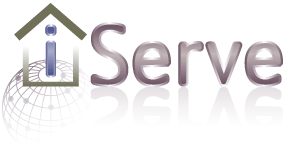What
iServe is what we refer to as service warehouse which unifies service publication, analysis, and discovery through the use of lightweight semantics as well as advanced discovery and analytic capabilities. iServe provides the typical features of service registries and additional functionality that exploits service descriptions, service annotations and further data gathered and derived from the analysis of these descriptions, data crawled from the Web, periodic monitoring and user activities.
A fundamental feature of iServe is that it publishes service descriptions as Linked Data, no matter their original format. These services, which we refer to as Linked Services, help application developers to locate Web services and Web APIs they can use to process or enrich their data.
iServe is the first Linked Services discovery platform available on the Web. Currently it is publicly available for your own research and development at:
- Main iServe deployment, is based on a recent version of iServe that we populate with service descriptions gathered from the Web and interlinked with other datasets such as DBPedia, Yago, and Freebase.
- iServe development deployment which uses the most recent version of the software, is often updated and revamped and is therefore not recommended for application use.
Why
Service-orientation advocates the development of complex distributed applications based on the reuse and composition of existing functionality offered as services. Essential to this vision are the publishing and discovery of services. A number of repositories have been created to this end but they have failed to provide suitable support for publishing and querying them in expressive and extensible manner.
How
The Web of Data proposes a set of principles that actually represent the current best practices for publishing data on the Web in a machine processable manner. iServe builds upon these principles and uses as its core what we refer to as the Minimal Service Model, a minimal vocabulary for describing services in RDF which abstracts us away from the original approach used for annotating the services, such as SAWSDL, WSMO-Lite, MicroWSMO or OWL-S. The Minimal Service Model provides a simple common ground for describing both WSDL services and Web APIs in RDF in a way such that it can be directly used by developers for simple service matchmaking based on SPARQL.
iServe currently embeds a number of import mechanisms able to deal with
- SAWSDL annotations,
- WSMO-Lite annotations
- MicroWSMO annotations of Web APIs.
- OWL-S Semantic Web Services descriptions
Taking the original descriptions, iServe automatically generates the appropriate RDF statements according to the Minimal Service Model and exposes them as Linked Data, thus providing a simple means for publishing service descriptions in a manner that is suitable for the description, interlinking of services with people and data, discovery of reusable services, and their eventual invocation.
Using iServe
To facilitate the consumption and manipulation of the published linked data about services, iServe provides three interfaces:
- a Web-based application, called iServe Browser, allowing users to browse, query, and upload services to iServe
- a SPARQL endpoint where all the data hosted in iServe can be accessed and queried
- a RESTful API that enables creating, retrieving and querying for services directly from applications
Additionally, we provide two Web-based applications, SWEET & SOWER supporting the annotation of Web APIs and WSDLs based on MicroWSMO and WSMO-Lite respectively, which directly provide the means for publishing the annotations in iServe.




